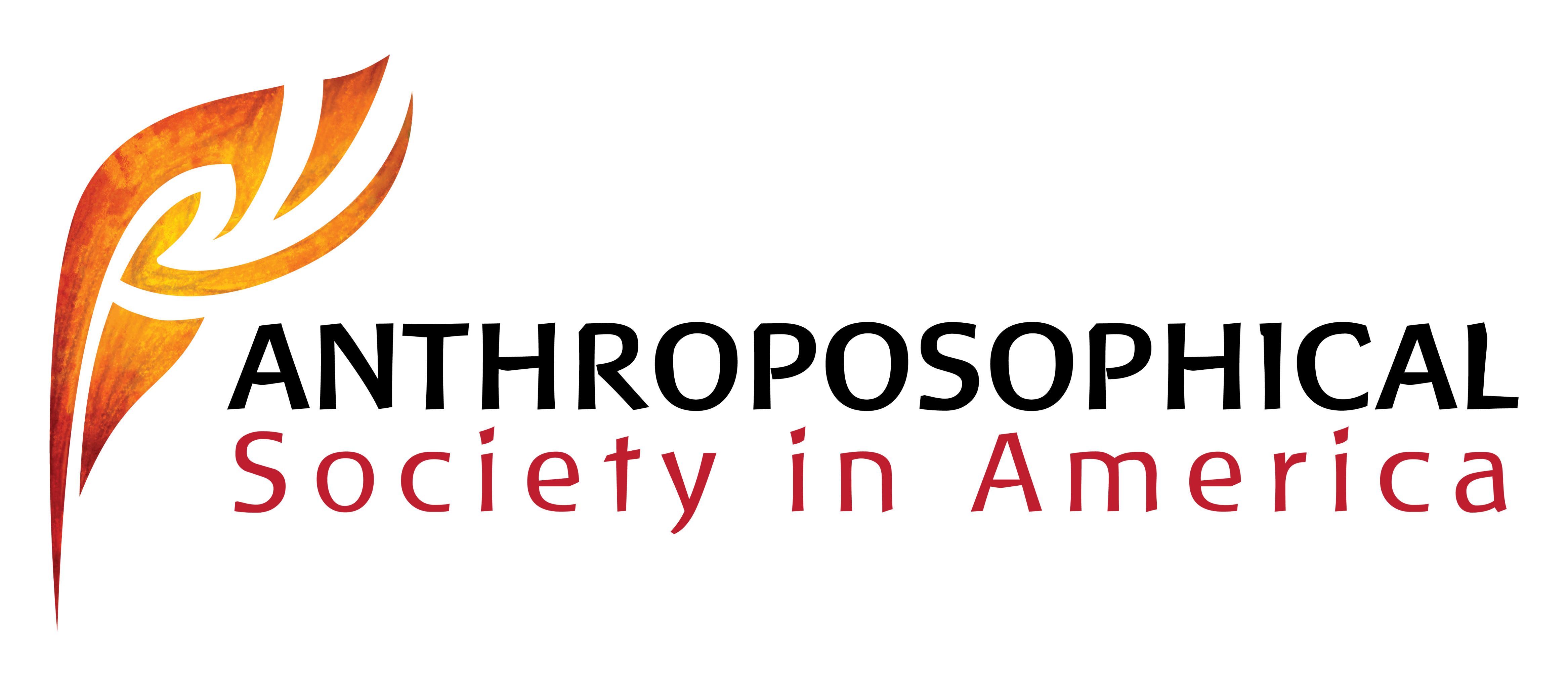From the General Secretary

Anthroposophy is a path of inquiry, a way of being in the world, and of service to the world. So, it matters how we form social foundations out of interest in matters of the world as well as the beings of the spiritual world. One aspect of this anthroposophical inquiry is that within this inquiry is a living awareness of the lawfulness of the spiritual world which differs from that of the material world. This difference is complicated, yet I have found it essential to try to understand both and their connection as a way of discerning how to navigate and lead in our time. This essay concerns itself with this discernment from an anthroposophical perspective.
Every human being is a manifestation of an individuality evolving over multiple incarnations. Each of us is an embodiment of that unique individuality, and through that embodiment we form an identity which links pre-earthly intentions to the facts and circumstances of a particular incarnation. The distinction between an anthroposophical understanding of individuality, including reincarnation and karma, and how we understand identity in today’s terms is a source of much confusion, conflict, and misunderstanding. Of course, individuality and identity are connected, but the tools for comprehending and working through them are sourced in different places.
I am the only one who can know my individuality, that which is the core-seed of higher Self. Identity on the other hand, while self-situated in a context of hereditary and chosen communities, is formed by external as well as internal influence. The question of spiritual freedom hinges on this understanding; that is how to know one’s Self within and outside the intrinsic and extrinsic formation of identity. Part of the unfolding of an individual’s karma arises from navigating between individuality and identity or integrating the two. This process requires a condition of spiritual freedom which only I as an individual can exercise for myself, though others can support me in that process.
In How to Know Higher Worlds Rudolf Steiner sets out numerous conditions or requirements for spiritual development. For me, the ninth “requirement” points directly to the distinction and link between individuality and identity. We bring some “knowing” or traits with us from prior incarnations—things we have to work through—and we are born in a particular time, place, and social circumstances. Our behavior and characterological patterns emerge from inner impulses and external forces. In How to Know Higher Worlds, Chapter 4, “Practical Considerations,” Rudolf Steiner coaches each of us on our path of self-knowledge:
In addition to anger and irritation, we must also struggle against other traits, such as fearfulness, superstition, prejudice, vanity, ambition, curiosity, the urge to gossip, and the tendency to discriminate on the basis of such outer characteristics as social status, gender, race, and so on…Misunderstandings can easily arise if, for example, we believe that the injunction to overcome fear means becoming foolhardy; or to fight against discrimination based on social status and race means becoming blind to differences among people. The fact is that we learn to recognize these differences for what they are only when we are no longer caught up in prejudice. Even in ordinary life, fear of a thing prevents from seeing it properly. In this sense, racial prejudice prevents us from seeing into a human soul. The esoteric student must take such ordinary common sense and perfect it inwardly with great sensitivity and precision.
This path of self-knowledge is both a creator of inner freedom and a result of it. That is, the more we can truly observe ourselves with a will for truth and self-transformation, the more clearly we see our identity in relation to our sense of our individuality and its purpose in this particular incarnation. Behind such a statement is an assumption that individuals can transform themselves on the long arc to becoming angels and, thus, free of karma.
An exercise such as understanding our sympathies and antipathies is a direct path of insight into the individuality/identity complex. From the capacity to observe our sympathies and antipathies, starting with simple likes and dislikes, then moving more deeply into that to which we are attracted or from which we are repelled, including levels of somatic sensing, is a way toward insight. This path of inquiry may make visible what we have inherited from our cultural milieu in our early development, from our families across generations, and from our education and peers and our natural and sub-natural environment. In this process of excavating the layers of our conditioning, a new consciousness emerges. It becomes possible to say yes or no to carrying forward aspects of that conditioning, and what is best to let go of.
Work with deep biography is a venture in this process. Memories, images, and moments situated in time (past and present) also move us across spaces—where we were then, where we are now—with tremendous specificity. Along the way, one might start to have glimmers of individuality, resonances with experiences, which seem free of either space or time, that may begin to indicate an arc of one’s individuality across incarnations. All this is part of stepping fully into navigating individuality and identity.
Such a profound discipline will take us into the complexity of our assumptions about the world, so that we can recognize, take responsibility for, and manage them in such a way that they do not cloud sight into individuality or create barriers to relationships. Make no mistake, this is arduous discipline that takes time to unfold. It abides no sentimentality, no entitlement, and no lack of will. This path of inquiry is an essential blessing of anthroposophy; it is what makes the path real, present, alive, and not without the deep joy of discovery.
Western culture has brought significant focus to the notions of self and identity, and perhaps also of individuality. One can trace the “me generation’s” origins to the mid-fifteenth century, the Renaissance, and the advent of an anthropocentric worldview. In that formative time, individual initiates brought powerful insights from the spiritual world to culture. But the existing power structures—religious and economic—inherently antipathetic to change, met those insights with their own assumptions about “best use” of those insights. Power chose self-interest in order to maintain control over rights and economic life.
In overwriting the more esoteric aspects and deep service to humanity of these initiates, the conflation of religion, political power, and the control of natural resources, was marked by the attachment to and ascent of materialism and the dominance of capital. In the battle of the marketplace, identity became a commodity. Such materialism devalued human experience because it focused on the tangible and measurable; its extrapolation would move from the increasingly refined representation of appearances to the replication of the human being itself. Out of this thread of self-interest, spurred on by commerce and the capital driving it, capacities to truly meet and see each other have suffered. The “social distancing” of the last few years had begun well before it was named as such, and what was arising instead is a kind of social malaise or dis-ease.
The path toward knowing our individuality in light of the commodification of identity also presents us with one of the greatest challenges of our time—the exercise of inner freedom brought into the field of social life. That is, we need to get along, create and abide by agreements, and find the value of community—all as antidotes to the current social dis-ease. This seems as true locally as it does on a world stage.
What then are the agreements that we create and live by that make it possible for us to come together collaboratively out of respect for each other’s freedom, that help us to form and hold community, and govern organizations? In this vein, the distinction between inner, cultural freedom and political or legislated freedom is paramount. Navigating between the two kinds of freedom is fraught with misunderstanding and the potential for polarization, and requires a deep step in ethical life. That is to say, to step into an ethic of responsibility not only for the exercise of free Self but also for that of each other. No one is exempt from that responsibility.
This speaks to a level of agreement that is based in love and trust—quite the opposite of our current jurisprudence which arises from distrust. If this latter condition were not the case, why would so many complaints land in litigation, and why would there be such an exponential need for professional mediation? Rudolf Steiner indicated the essence of a profound social ethic in the following excerpt from Anthroposophical Ethics … St. Francis, Lecture III, GA 155, May 30, 1912:
Empathy is awakened in the right manner if we take an interest in a being; and if, as anthroposophists, we set ourselves the task of extending our interests more and more and of widening our mental horizon. This will promote the universal brotherhood and sisterhood of mankind. Progress is not gained by the mere preaching of universal love, but by the extension of our interests further and further, so that we interest ourselves more and more in souls with widely different characters, racial and national particularities, with widely different temperaments, and holding widely differing religious and philosophical views, and then approach them with understanding. Right interest, right understanding, calls forth from the soul the right moral actions.
What lives at the heart of Rudolf Steiner’s work is the sacredness of each individual. Each person is incarnating spirit into physical matter and is carrying knowledge of the spiritual world and its lawfulness into the world of material lawfulness. Understanding and acting out of the ‘both/and’ consciousness is anthroposophical discipline. Yet, the exercise of such a discipline cannot separate us from the currents of the world, from coming to know each other soul to soul, and associating in community. Nowhere does Rudolf Steiner suggest otherwise.
For individuality to shine forth in freedom requires that we find healing and health in the embattled field of identity—a field in which economics, commerce, politics, and power overshadow the beauty of the culture we long to create, spirits together, and in Rudolf Steiner’s words, the “harmonizing of karma” [cf., Karma Lectures, Vol 3, Lecture 11, and other places]. Taking this on is an individual responsibility even as we each navigate the inner space of knowing individuality and identity—individually and in community.
As our own interest leads us more deeply into the world, there is so much to learn and unlearn, to find peace with. Practicing forgiveness and love with others and ourselves in an honest relationship with truth will assist taking responsibility for and contributing to the wellbeing of humanity and the earth. In this process, it is hard to find any certainty and certainly any comfort. However, it is not a time for comfort; comfort sits at the edge of sleep.
My hope is that this exploration of individuality and identity informs how important it is to grasp them both as alive as parts of one reality and contributes to an understanding of the experience of self and world. One certainty is that we need to bring warmth, inquiry, and understanding in how we engage with each other and transform the society in which we live. An ever more human future depends on it.
John Bloom
©2023
